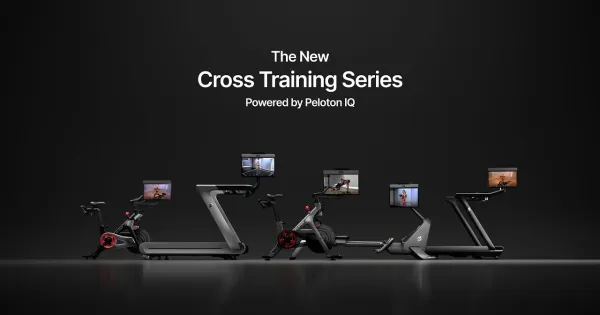10 Ways to Develop Effective Communication

Effective communication is key to thriving in business. Whether it’s between employees, management, or external partners, clear and open communication strengthens relationships, boosts productivity, and reduces misunderstandings. However, effective communication can be more challenging than it seems, requiring attention to methods and interpersonal dynamics.
Here are 10 practical ways to improve workplace communication, offering tips to help create a more positive and efficient work culture.
Way 1) Create Open Dialogue and Transparency

One of the first steps in developing effective communication in business is creating an environment where open dialogue and transparency are encouraged. Employees at all levels should feel comfortable expressing their opinions, raising concerns, and asking questions without fear of retribution.
Benefits of Open Dialogue:
- Encourages a culture of trust
- Enhances problem-solving by involving different perspectives
- Helps prevent misunderstandings or rumors from spreading
- Builds a sense of ownership and responsibility among employees
How to Implement:
- Hold regular all-hands or town hall meetings where employees can share feedback and ask questions.
- Encourage managers to maintain an open-door policy, where employees can approach them freely.
- Use anonymous suggestion boxes or digital platforms for employees who may feel hesitant to speak up in public.
By making transparency and openness a priority, businesses can ensure that employees feel valued and engaged, leading to higher morale and better overall performance.
Way 2) Use Multiple Communication Channels

Relying on a single communication method is rarely effective. People consume information differently, and using various channels ensures that your message reaches everyone. Some employees may prefer email, while others find face-to-face meetings or instant messaging platforms more conducive to receiving and understanding information.
Communication Channels to Utilize:
- Email: Best for formal, detailed communications that may require future reference.
- Instant Messaging: Useful for quick, informal conversations or collaboration on projects.
- Video Calls/Meetings: Ideal for remote teams, complex discussions, and situations that require visual aids.
- Intranet Platforms: Great for centralizing information, documents, and announcements.
How to Implement:
- Assess your team's preferences through surveys or informal feedback.
- Ensure everyone is trained on the communication tools being used, like Slack, Microsoft Teams, or Zoom.
- Match the communication channel to the message; for example, detailed reports are better suited to email, while brainstorming sessions are more effective via video calls or face-to-face meetings.
Having multiple communication channels ensures inclusivity, as well as the ability to adjust based on the type of information being shared.
Way 3) Develop Active Listening Skills

Communication is not just about speaking; it also involves listening. Active listening is the process of fully concentrating on what the other person is saying, understanding their message, responding thoughtfully, and remembering the information. This skill is crucial for developing effective communication because it ensures that the speaker feels heard and respected, which in turn leads to more meaningful exchanges.
Benefits of Active Listening:
- Builds stronger relationships between team members and management
- Enhances empathy and reduces conflicts
- Improves decision-making by considering all perspectives
- Creates a supportive work environment
How to Implement:
- Encourage employees to practice active listening by teaching techniques like nodding, summarizing the speaker's points, and asking clarifying questions.
- Managers should model active listening in meetings and one-on-one sessions.
- Promote a culture where interruptions are minimized and participants are fully present during discussions.
Active listening allows for better understanding and can significantly improve the quality of communication within a business.
Way 4) Promote Constructive Feedback

Feedback is essential for growth, but it must be delivered in a way that is constructive and focused on improvement rather than criticism. Creating a culture where constructive feedback is encouraged can help employees understand their strengths and areas for improvement, leading to personal and professional development.
Characteristics of Constructive Feedback:
- Specific: General feedback can be confusing. Instead, focus on particular behaviors or outcomes.
- Actionable: Provide suggestions on how the recipient can improve.
- Balanced: Include both positive feedback and areas that need improvement.
How to Implement:
- Train managers to give balanced feedback during performance reviews and one-on-one meetings.
- Use the "feedback sandwich" approach: Start with positive feedback, then discuss areas for improvement, and conclude with encouragement.
- Encourage peer-to-peer feedback, as insights from colleagues can be particularly valuable.
Effective feedback helps employees grow and develop their skills, contributing to their overall performance and engagement.
Way 5) Clarify Roles and Expectations

Confusion about roles and responsibilities can lead to poor communication, frustration, and inefficiencies. Ensuring that every team member understands their role, as well as the expectations set for them, is a vital aspect of effective communication.
Benefits of Clear Roles:
- Prevents misunderstandings about task ownership
- Reduces the duplication of work or responsibilities
- Enhances accountability
- Improves collaboration, as team members understand how their roles interact
How to Implement:
- Ensure that job descriptions are clear, detailed, and updated regularly.
- Use project management tools like Asana or Trello to assign tasks and track progress, ensuring that everyone knows who is responsible for each part of a project.
- Hold regular team meetings to discuss role-related questions and address any overlaps or confusion.
By ensuring role clarity, businesses can improve workflow and collaboration, leading to more efficient and effective communication.
Way 6) Leverage Emotional Intelligence (EQ)

Emotional intelligence (EQ) is the ability to recognize, understand, and manage our own emotions and the emotions of others. High EQ create better communication in the workplace by helping individuals navigate interpersonal relationships more effectively and empathize with others’ feelings.
Components of Emotional Intelligence:
- Self-awareness: Understanding one’s own emotions and their impact on others.
- Self-regulation: Managing one’s emotions, especially in stressful situations.
- Empathy: Understanding the emotions of others.
- Social skills: Building and maintaining positive relationships.
How to Implement:
- Offer emotional intelligence training to employees and managers.
- Encourage empathy in the workplace by promoting team-building activities that encourage understanding.
- Leaders should model emotionally intelligent behavior, such as managing stress calmly and addressing conflicts with empathy.
Emotional intelligence can significantly enhance communication, reduce conflicts, and create a more harmonious workplace.
Way 7) Encourage Two-Way Communication

Communication in business should never be a one-way street. Effective communication involves both sharing information and listening to feedback, ensuring that all voices are heard. Two-way communication encourages collaboration and ensures that employees feel valued.
Benefits of Two-Way Communication:
- Increases employee engagement by making them feel heard
- Encourages innovation through collaborative discussions
- Builds trust between management and staff
- Allows for quicker identification and resolution of issues
How to Implement:
- Establish regular opportunities for feedback, such as during team meetings or through anonymous surveys.
- Encourage managers to ask for input from employees before making decisions that affect them.
- Use tools like suggestion boxes or online forums where employees can share ideas and concerns.
By promoting two-way communication, businesses can cultivate a more inclusive and collaborative environment.
Way 8) Tailor Your Message to Your Audience

Understanding your audience is crucial for effective communication. Whether you are communicating with employees, clients, or stakeholders, it's important to tailor your message to suit their level of understanding, interests, and communication preferences.
Tips for Tailoring Messages:
- Know Your Audience: Consider their background, knowledge of the subject, and any cultural factors that might affect how your message is received.
- Use Appropriate Language: Avoid jargon if your audience may not be familiar with it, and use language that resonates with them.
- Provide Context: Ensure your audience understands why the message is important to them by giving necessary background information.
- Adjust the Delivery Method: Some audiences may prefer written communication, while others respond better to presentations or face-to-face meetings.
How to Implement:
- Before drafting important messages, take time to analyze your audience’s needs and preferences.
- Test different communication styles with various groups to identify what works best.
- Use feedback to continuously refine how you deliver information.
Tailoring communication ensures that the message is not only received but also understood and acted upon.
Way 9) Regularly Review Communication Processes

Like any other aspect of business, communication methods and processes should be regularly reviewed and updated. This ensures that they remain effective and relevant in the face of changing technologies, organizational structures, and workforce dynamics.
Benefits of Regular Reviews:
- Keeps communication aligned with business goals
- Ensures the use of the latest, most efficient tools
- Identifies and eliminates ineffective communication practices
- Provides opportunities to introduce new, innovative methods
How to Implement:
- Conduct quarterly reviews of communication tools and processes with your team.
- Encourage employees to provide feedback on how communication can be improved.
- Stay up-to-date with new communication technologies and trends that might benefit your organization.
Regularly reviewing communication processes ensures continuous improvement and adaptation to the evolving needs of the business.
Way 10) Invest in Communication Training

Finally, to develop effective communication in business, it's essential to invest in regular communication training for all employees, not just leadership. Training equips team members with the necessary skills to communicate clearly, resolve conflicts, and engage in productive dialogue.
Key Areas for Communication Training:
- Presentation Skills: Teaching employees how to present ideas clearly and confidently.
- Conflict Resolution: Equipping team members with strategies to manage and resolve conflicts constructively.
- Writing Skills: Improving the clarity and effectiveness of written communication, especially in emails and reports.
- Non-verbal Communication: Understanding body language and other non-verbal cues that contribute to effective communication.
How to Implement:
- Partner with professional training organizations to conduct workshops and seminars on key communication skills.
- Offer online courses or in-house training sessions that employees can access at their convenience.
- Encourage continuous learning by providing resources like books, podcasts, and webinars on effective communication.
Investing in communication training ensures that employees at all levels are equipped to contribute to a culture of effective communication.
Final Thoughts
Effective communication in business combines practices, tools, and attitudes that create a collaborative and positive environment. By encouraging open dialogue and leveraging emotional intelligence, businesses can create a culture of clarity and respect.
Improving communication enhances internal dynamics, strengthens client relations, and boosts employee morale, contributing to long-term success. Adapting strategies as communication methods evolve ensures your business stays efficient and adaptable.
Key Takeaways
| Strategy | Key Takeaways |
|---|---|
| 1. Open Dialogue and Transparency | Builds trust, reduces misunderstandings, and boosts engagement. |
| 2. Use Multiple Channels | Reaches everyone by using different communication methods. |
| 3. Active Listening | Improves understanding and reduces conflicts. |
| 4. Constructive Feedback | Helps employees grow with clear, actionable feedback. |
| 5. Clarify Roles and Expectations | Prevents confusion and improves efficiency. |
| 6. Leverage Emotional Intelligence | Enhances relationships by managing emotions and empathy. |
| 7. Encourage Two-Way Communication | Increases collaboration by listening to everyone’s input. |
| 8. Tailor Your Message | Ensures the message fits the audience’s needs and understanding. |
| 9. Review Communication Processes | Keeps communication effective by updating tools and methods regularly. |
| 10. Communication Training | Equips employees with skills to communicate better. |





